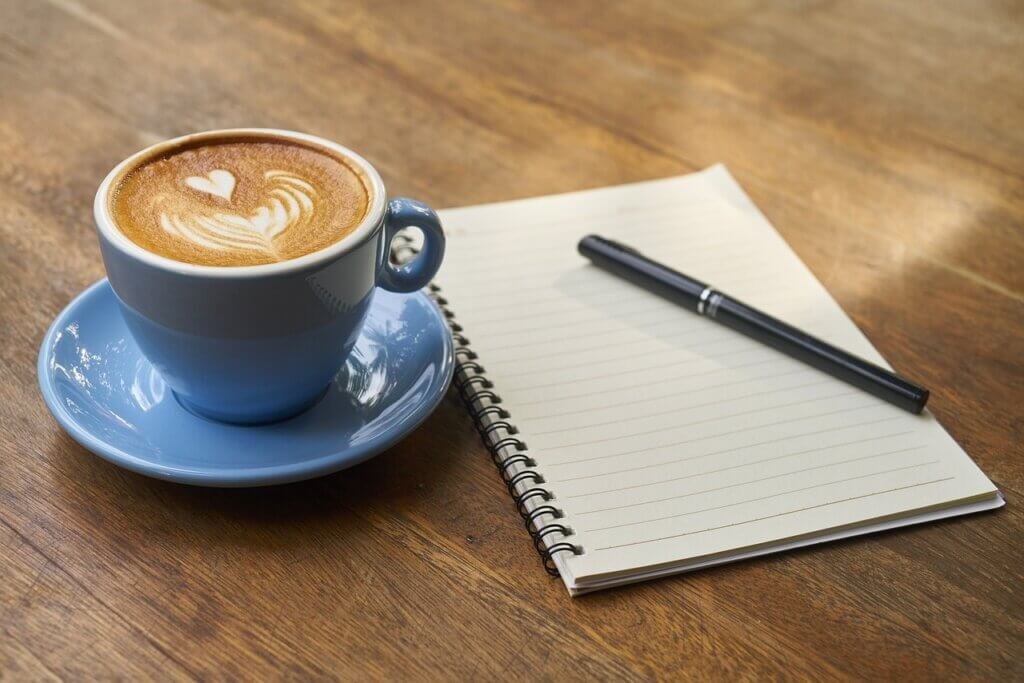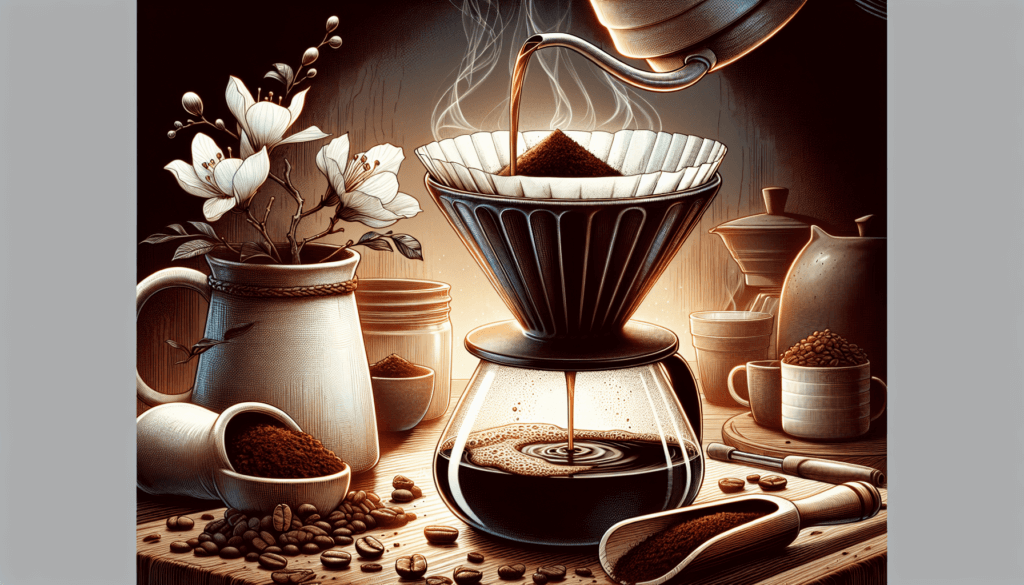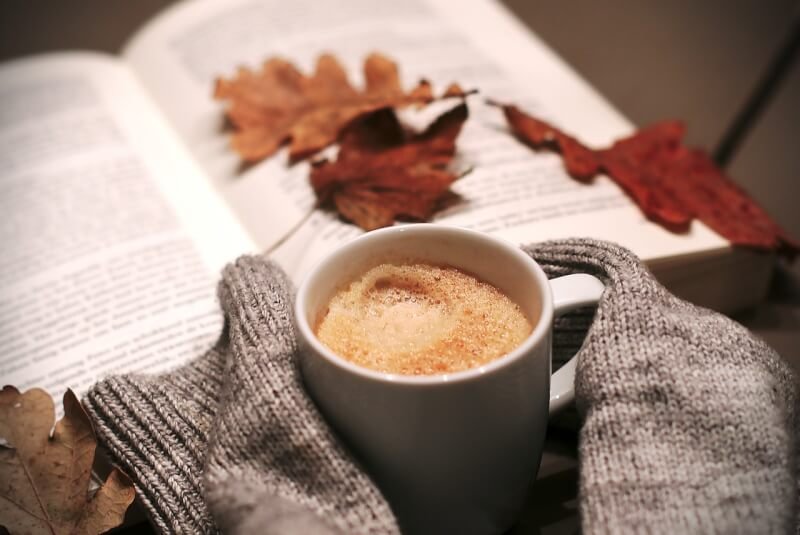If you’re a coffee lover who appreciates the art of a perfectly brewed cup, then you’re in for a treat. In this article, you’ll discover some invaluable tips for brewing a cup of pour over coffee that is rich in flavor and guaranteed to delight your taste buds. From choosing the right coffee beans to mastering the pour-over technique, you’ll soon be well on your way to brewing a flawless cup of coffee that rivals your favorite café. So grab your favorite mug and get ready to embark on a coffee brewing journey like no other!
Choosing the Right Coffee Beans
Freshness
When it comes to brewing the perfect cup of pour over coffee, one of the most crucial factors to consider is the freshness of your coffee beans. Coffee is at its best when it is freshly roasted and ground. This is because the flavors and aromas of coffee start to degrade shortly after the beans have been roasted. To ensure that your coffee is as fresh as possible, it’s recommended to buy whole bean coffee and grind it just before you brew. This way, you can experience the full flavor profile of the coffee and enjoy a rich, vibrant cup every time.
Roast Level
Another important consideration when choosing coffee beans for your pour over brew is the roast level. Coffee beans can be roasted to varying degrees, ranging from light to dark. Each roast level brings out different flavors and characteristics in the coffee. Lighter roasts tend to be brighter and more acidic, allowing the unique flavors of the beans to shine through. On the other hand, darker roasts tend to be richer and more full-bodied, with a pronounced caramelized flavor. Consider experimenting with different roast levels to find the one that best suits your taste preferences.
Grind Size
The grind size of your coffee beans plays a significant role in the brewing process. The right grind size ensures that the coffee is extracted evenly, resulting in a well-balanced and flavorful cup. For pour over brewing, a medium-fine grind is generally recommended. This grind size allows for a controlled extraction, preventing over or under-extraction. A fine grind can lead to over-extraction, resulting in a bitter cup, while a coarse grind may result in under-extraction, producing a weak and thin coffee. Invest in a quality burr grinder to consistently achieve the ideal grind size for your pour over brew.
Prepping Your Equipment
Choosing a Pour Over Brewer
Selecting the right pour over brewer is essential for achieving the perfect cup of coffee. There are various types of pour over brewers available, such as the Hario V60, Chemex, and Kalita Wave. Each brewer has its own unique design and functionality, which can impact the overall flavor profile of your coffee. Consider the size of the brewer, as well as the shape and material of the brewer, when making your choice. Ultimately, the brewer that allows for a steady and controlled pour will help you achieve the best results.
Water Kettle
Investing in a high-quality water kettle is a must for pour over brewing. Ideally, you want a kettle that allows for precise temperature control and a steady, controlled pour. The temperature of the water is crucial in extracting the desired flavors from the coffee beans. Most pour over methods require a water temperature between 195°F and 205°F (90°C and 96°C). A kettle with a gooseneck spout will give you the control needed to pour the water evenly over the coffee bed. Look for a kettle with a built-in thermometer or adjustable temperature settings to ensure accuracy.
Filters
Choosing the right filters for your pour over brewer is often overlooked but can significantly impact the quality of your coffee. Opt for high-quality, bleached or unbleached paper filters that fit your specific brewer. Paper filters serve to remove any sediment or oils from the coffee, resulting in a clean, crisp cup. Avoid using metal filters, as they can allow more sediment to pass through, potentially affecting the taste and clarity of the coffee. Experiment with different brands and types of filters to find the one that provides the best balance of flavor and clarity for your brew.

Measuring Your Ingredients
Coffee to Water Ratio
Getting the coffee to water ratio right is crucial for achieving the desired strength and flavor in your pour over brew. The golden ratio is often recommended as a starting point: 1:15 or 1 gram of coffee to 15 grams of water. However, feel free to adjust this ratio to suit your personal taste preferences. If you prefer a stronger cup, you can increase the amount of coffee, or decrease it for a milder cup. Keep in mind that the ratio may also vary depending on the roast level and grind size of your coffee beans. Don’t be afraid to experiment and find the perfect balance for your preferred taste.
Calculating the Amount
To determine the amount of coffee and water you need for your brew, you will need a scale. Using a scale ensures accuracy and consistency in your measurements. Start by determining the serving size you desire. For a standard pour over brew, a 12-ounce (355 ml) mug is often used as a reference. Based on the chosen coffee to water ratio, calculate the amount of coffee and water needed. For example, if you’re using a 1:15 ratio and brewing a 12-ounce (355 ml) cup, you’ll need approximately 20 grams of coffee and 300 grams of water. Adjust the measurements as needed for larger or smaller servings.
Heating the Water
Water Temperature
The temperature of the water used for your pour over brew is crucial for proper extraction. As mentioned earlier, the ideal range is between 195°F and 205°F (90°C and 96°C). Water that is too hot can lead to over-extraction, resulting in a bitter taste. On the other hand, water that is too cold may not fully extract the flavors from the coffee beans, resulting in a weak cup. Use a thermometer to ensure the water is within the desired temperature range before pouring it over the coffee bed. If you don’t have a thermometer, you can bring the water to a boil and let it sit for 30 seconds to cool slightly.
Boiling and Cooling
To heat the water for your pour over brew, bring it to a boil and then allow it to cool to the desired temperature. Boiling the water ensures that any impurities or off flavors are removed. Allow the water to cool for about 30 seconds after reaching a boil, or longer if needed, to reach the target temperature. This process helps achieve the optimal extraction and the best flavor notes in your coffee. Remember that temperature also affects brewing time, so finding the right balance is crucial. Experiment with different cooling times to find what works best for your brewing method and personal taste preferences.

Rinsing the Filter
Importance of Rinsing
Rinsing the paper filter before starting your pour over brew might seem like an unnecessary step, but it serves an essential purpose. Rinsing the filter helps remove any paper residue and preheats the brewer. This ensures that the filter doesn’t impart any unwanted flavors into the coffee and helps maintain a consistent temperature throughout the brewing process. Additionally, rinsing the filter helps to minimize any paper taste that may alter the overall flavor profile of your brew. Taking the time to rinse the filter is a simple step that can have a significant impact on the quality of your pour over coffee.
Process of Rinsing
To rinse the paper filter, place it in the pour over brewer and position the brewer over your mug or carafe. Slowly pour hot water over the filter, ensuring that all parts of the filter are thoroughly wetted. This process helps remove any paper residue and warms up the pour over brewer. Discard the rinsing water after the paper filter has been thoroughly rinsed. Your filter is now ready, and you can proceed with your pour over brewing process. This extra step may seem small, but it sets the foundation for a clean and delicious cup of pour over coffee.
Blooming the Coffee
Definition of Blooming
The blooming process in pour over brewing involves saturating the coffee grounds with a small amount of hot water for a brief period before starting the main pour. This step allows the coffee to degas and release carbon dioxide, which can impact the extraction process if not appropriately addressed. Blooming helps create a more even extraction and enhances the overall flavor of the coffee. It also ensures that the coffee particles are evenly saturated before the main pour begins, leading to a more consistent extraction.
How to Bloom the Coffee
To bloom the coffee, start by pouring enough hot water to wet the coffee grounds evenly. Use approximately twice the weight of water to coffee. For example, if you’re using 20 grams of coffee, pour around 40 grams of hot water over the grounds. Allow the coffee to bloom for about 30 to 45 seconds. During this time, you’ll notice the coffee bed swell and release gases as the carbon dioxide escapes. This blooming process helps create a more consistent extraction and prepares the coffee for the main pour. After the blooming period, continue with your preferred pouring technique.

Pouring Techniques
Center Pour
The center pour technique involves pouring hot water directly into the center of the coffee bed, slowly and steadily. This technique helps maintain an even saturation of the coffee grounds and promotes a balanced extraction. Start by pouring a small amount of water into the center, letting it soak into the grounds before adding more. Continue pouring in a circular motion, moving from the center towards the outer edges of the coffee bed. The key is to pour slowly and avoid pouring too close to the filter, as this can result in uneven extraction.
Circular Pour
The circular pour technique is similar to the center pour, but instead of focusing on the center, you pour in a circular motion covering the entire coffee bed. Start by pouring in the center and gradually move outward in a spiraling pattern. This technique ensures that all areas of the coffee bed are thoroughly saturated and promotes an even extraction. By pouring in a circular motion, you avoid any unevenness and ensure that every particle of coffee is extracted evenly.
Pulse Pour
The pulse pour technique involves pouring the water in intervals, allowing the coffee to settle and release gases between each pour. With this technique, you pour in pulses or bursts rather than a continuous stream. Start by pouring a small amount of water in the center of the coffee bed, allowing it to settle before adding more. Continue this process, pouring in intervals until you’ve reached your desired brew volume. The pulse pour technique helps maintain a consistent extraction by allowing the coffee to release gases and settle, ensuring an even saturation throughout the brewing process.
Maintaining the Brew Time
Determining Brew Time
Brew time refers to the duration it takes for the entire pour over process, from blooming to the final pour, to complete. Brew time can vary depending on factors such as grind size, pour rate, and personal taste preferences. On average, a typical brew time for pour over coffee falls between three and four minutes. However, it’s important to note that the brew time is not the only indicator of a well-brewed cup. Pay attention to the other variables, such as grind size, pour techniques, and water temperature. These factors, combined with taste, will help you determine the ideal brew time for your desired cup of pour over coffee.
Adapting Based on Taste
While brew time serves as a general guideline, don’t be afraid to adapt and adjust based on your personal taste preferences. If you find that your coffee is too weak or under-extracted, you can extend the brew time slightly by pouring more slowly or adjusting the grind size. On the other hand, if your coffee tastes too strong or over-extracted, you can shorten the brew time by pouring more quickly or using a coarser grind. The key is to experiment and fine-tune the brewing variables until you achieve a cup of coffee that perfectly suits your taste buds.

Avoiding Common Mistakes
Over Extraction
Over extraction occurs when the coffee is brewed for too long or with too fine of a grind. This can result in a strong, bitter taste and an unpleasant aftertaste. To avoid over extraction, pay attention to the brew time and adjust if necessary. Additionally, consider using a slightly coarser grind to prevent the coffee from being over-extracted. It’s always better to lean towards under-extraction than over-extraction, as you can adjust and brew a stronger cup, but you can’t undo the bitterness of an over-extracted brew.
Under Extraction
Under extraction happens when the coffee is brewed for too short a time or with too coarse of a grind. This can result in a weak, sour, or acidic cup of coffee. To avoid under extraction, ensure that your coffee is sufficiently brewed by adjusting the brew time if needed. You can also try using a slightly finer grind to increase the extraction. Keep in mind that under-extraction can occur when the water temperature is too low or if the coffee is not properly bloomed. Pay attention to these factors to avoid under-extracted brews.
Improper Pouring
Pouring technique plays a significant role in the quality of your pour over brew. Avoid improper pouring, such as pouring too quickly or unevenly, as this can result in uneven extraction and a less enjoyable cup of coffee. Take your time and pour slowly and steadily, ensuring that all areas of the coffee bed are evenly saturated. With practice, you’ll develop a knack for pouring techniques and achieve a more consistent extraction. Remember, a successful pour over brew takes patience and precision, so take the time to perfect your pouring skills.
Understanding the Taste
Body
The body of a coffee refers to its mouthfeel and weight on the palate. It can range from light to medium to full-bodied. Light-bodied coffees tend to be more delicate with a lighter mouthfeel, while full-bodied coffees feel heavier and more substantial. The body of a pour over coffee can be influenced by factors such as the roast level, grind size, and brewing technique. Experiment with different variables to achieve the desired body in your cup. Remember that the body contributes to the overall sensory experience and can greatly enhance your enjoyment of the coffee.
Acidity
Acidity in coffee refers to its brightness and tanginess. It is a desirable characteristic that adds complexity and liveliness to the cup. Pour over brewing often highlights the acidity of a coffee, especially with lighter roast levels. The acidity can vary from mild and bright to intense and citrusy, depending on the origin and processing of the beans. Pay attention to the acidity in your cup and adjust the brewing variables to enhance or balance it according to your taste preferences. Acidity adds depth and vibrancy to your coffee, making it an essential element to understand and appreciate.
Flavor Notes
Flavor notes are the distinct tastes and aromas found in coffee. They can vary widely from fruity and floral to nutty and chocolatey, among many others. Pour over brewing allows the flavors of the coffee to shine through, providing a clear and nuanced taste experience. As you become more familiar with different coffee beans, you’ll develop an understanding of the flavor profiles and their characteristics. Take the time to explore the flavors in your cup and let your taste buds guide you in appreciating the intricacies of each coffee. Flavor notes make each cup unique and enjoyable, making the world of pour over coffee truly fascinating.
By following these tips and techniques, you’ll be well on your way to brewing the perfect cup of pour over coffee. Remember, practice makes perfect, so don’t be afraid to experiment and adjust the variables until you find your preferred taste. With patience, precision, and a little bit of passion, you can enjoy the rich, flavorful experience of pour over coffee right in the comfort of your own home. So go ahead, choose the right coffee beans, prep your equipment, measure your ingredients, heat the water, rinse the filter, bloom the coffee, pour with technique, maintain the brew time, avoid common mistakes, and embrace the taste of a perfectly brewed pour over coffee. Happy brewing!



